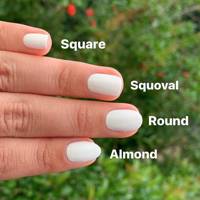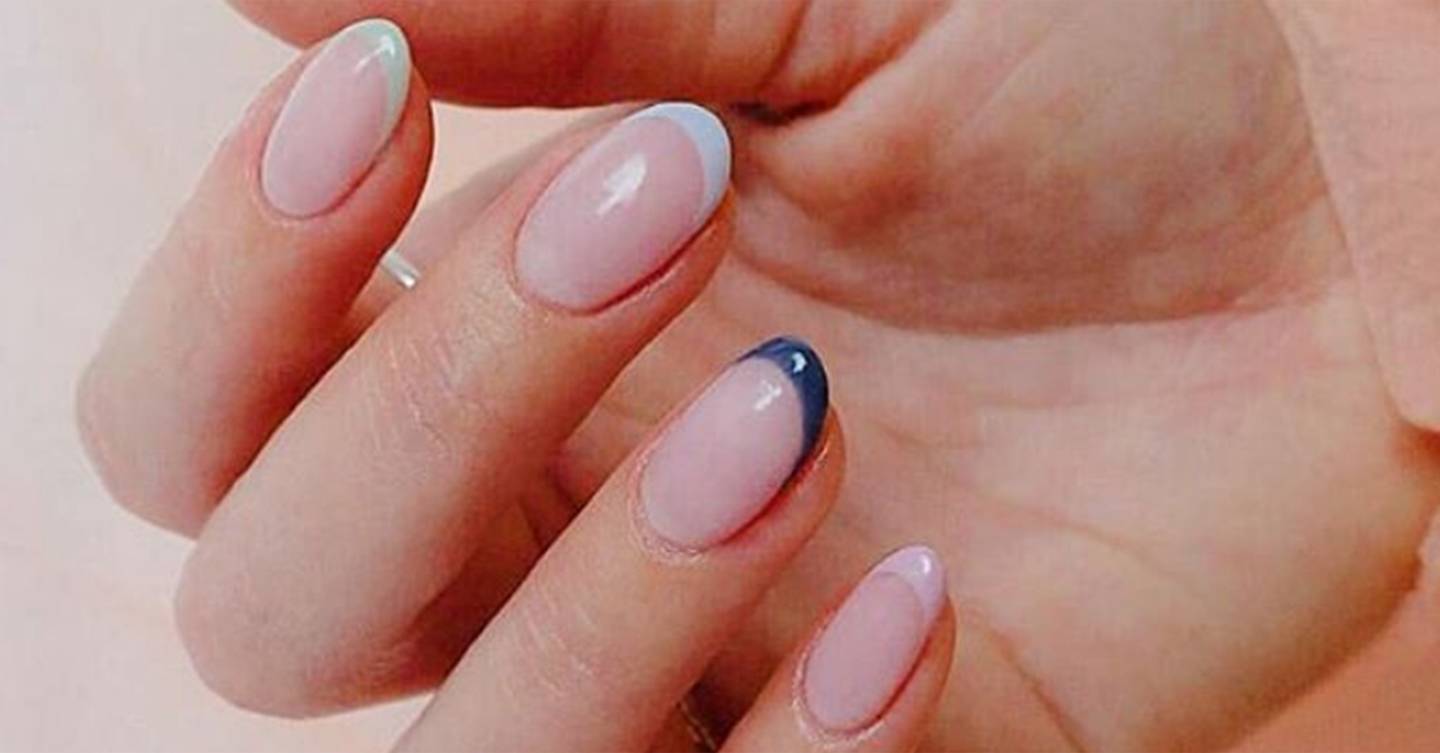“What shape would you like?” That’s the first question manicurists usually ask before they work their magic on our fingernails. It sounds simple enough, but if you’re a bit bamboozled like the rest of us (“ummm, nail shaped, please?”) allow us to explain the distinction between oval and squoval, or almond vs ballerina.

@oliveandjune / Instagram
What are oval nails?
Nails come in all different shapes and sizes. If you look at the pattern of your natural nails, you’ll probably find that you have an assortment of shapes between fingers – one might grow quite square, the other more rounded. The more rounded shape, is oval. Effectively it follows the same sort of shape as your finger tips, with softened round edges.
Why might people choose an oval nail shape over others?
Oval nail shapes are a classic. Since they’re a natural shape, they’re not trend driven. They’re neat (once you get all your nails looking uniform) and they work across all shades and lengths.
How would you file your nails into an oval shape?
You want to soften edges and make sure that the tip of your nail is slightly longer than the sides, so it doesn’t look to squared off. Taking your file, use a rounded motion aiming diagonally up one side and diagonally down the other. You can make the oval more or less pronounced depending on how vigorously you file. Don’t make it too sharp, though as you’re edging into ‘almond’ territory.

@overglowedit / Instagram
Does it make a difference if your nails are long/short?
Oval shape perfectly suits both long and shorter nails.
All you need is a nail file and possibly some clippers if you want to lose the length.
Any other tips?
There’s so much you can do with oval nails, the shape is a blank canvas for nail art, but one thing you can do to really emphasise their shape, is highlight the free edge with a colourful French mani to make the oval stand out.
